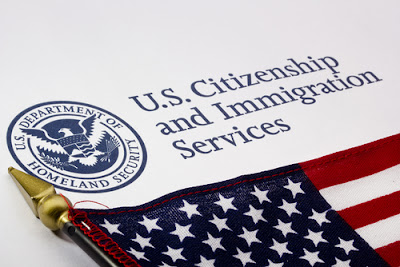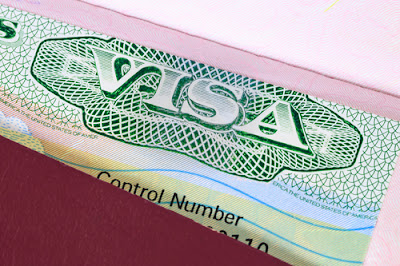 INTRODUCTION: DHS DIRECTOR RELEASES STATEMENT ON SOUTHWEST BORDER SECURITY
INTRODUCTION: DHS DIRECTOR RELEASES STATEMENT ON SOUTHWEST BORDER SECURITY
On October 17, 2016, the Secretary of the Department of Homeland Security (DHS), Jeh Johnson, released a statement on southwest border security [link]. The statement includes border security statistics as well as notes about recent immigration events. Finally, because Secretary Johnson's tenure will likely come to an end with the conclusion of President Barack Obama's term in office, he offered his hopes for the future of immigration law and border security going forward. In this post, I will examine each of the three aforementioned parts of Secretary Johnson's statement on border security.
STATISTICS
Secretary Johnson's statement includes the following chart [see article] of southwest border apprehensions for fiscal years 2013, 2014, 2015, and 2016.
In total, 408,870 persons were apprehended trying to cross the southwest border illegally in FY-2016. While this was a marked increase from the 331,333 in FY-2015, it was slightly fewer than the 414,397 in FY-2013 and dramatically fewer than the 479,371 in FY-2014. 59,692 unaccompanied children were apprehended in FY-2016, making that the second highest number of the four years. FY-2016 also saw the largest number of family members apprehended at the border over the past four years. Conversely, FY-2016 saw far fewer individuals apprehended at the border in FY-2016 than in FY-2013 and 2014, although slightly more than in FY-2015.
Secretary Johnson explains that FY-2016 reflects a trend in apprehensions at the border. From the 1980s to 2008, the number of apprehensions at the border was far higher than the numbers seen over the years included on the chart [PDF version]. From 1983-2006, the number of apprehensions exceeded 1,000,000 19 times in 24 years, reaching its highest point with 1,643,679 in 2000.
For the years in which the numbers were the highest, there were many more families and individual adults from Mexico endeavoring to cross the border. However, the number of Mexican citizens attempting to cross the border has been in steady decline, in contrast with the growing number of Central Americans — especially families and unaccompanied children — apprehended over the past few years. Secretary Johnson explained that more Central Americans than Mexicans were apprehended for the first time ever in FY-2014, which happened again in FY-2016.
SECRETARY JOHNSON'S ANALYSIS OF THE SITUATION ON THE SOUTHERN BORDER
While overall illegal border crossings and apprehensions have decreased, the number of unaccompanied children from Central America apprehended presents immigration authorities with unique challenges in balancing immigration enforcement priorities with humanitarian considerations. Secretary Johnson explains that the latter includes “providing individuals with the opportunity to assert claims for asylum and other forms of humanitarian relief.”
To help alleviate the problems stemming from the influx of migrants from Central America, the DHS launched an initiative to make it easier for certain qualified applicants to seek refugee status while abroad instead of attempting to cross the southwest border illegally. Under this agreement, the government of Costa Rica will host a limited number of persons from Honduras, El Salvador, and Guatemala who may have their cases for refugee status considered by DHS officers [see blog]. Secretary Johnson also noted that the DHS has announced an expansion of the categories of individuals who are eligible for participation in the Central American Minors Program when accompanied by a qualified child [link].
In a report issued by the American Immigration Lawyers Association (AILA), it was noted that certain classes of asylum applicants who are in immigration detention have had a high rate of success in seeking asylum.[1] AILA explained that 87% of mothers and children detained in family detention centers in Texas and Pennsylvania were likely to be found eligible for asylum and other forms of humanitarian relief by an Immigration Judge [PDF version].
ENFORCEMENT PRIORITIES
In November of 2014, President Obama and Secretary Johnson announced the creation of new immigration enforcement priority levels [PDF version]. Secretary Johnson stated that 99% of those currently in immigration detention fit within one of the three enforcement priorities created in 2014. Of those in detention, 85% are within the top priority level. Secretary Johnson explained that 35% of those deported by the Immigration and Customs Enforcement (ICE) in 2009 were convicted criminals, but that number stands at approximately 60% thus far in 2016.
HAITIAN NATIONALS
Secretary Johnson observed that the DHS has seen an “influx of Haitian nationals” on the southern border. On September 22, 2016, Secretary Johnson announced that the DHS would resume removing Haitian nationals in accordance with the DHS's enforcement priorities [see blog]. However, on October 4, 2016, Secretary Johnson temporarily suspended removal fights to Haiti in light of the humanitarian crisis resulting from Hurricane Matthew [see blog]. Nevertheless, the Secretary's September 22 decision remains in effect, and the DHS is working with Haiti to resume removals to Haiti “in as humane and minimally disruptive a matter as possible.”
SECRETARY JOHNSON'S PROPOSALS GOING FORWARD AND MY THOUGHTS
Secretary Johnson stated that border security alone cannot deal with the factors causing so many Central Americans to attempt to cross the southern border illegally. Furthermore, Secretary Johnson stated, “Walls alone cannot prevent illegal migration.”
Regarding the first problem, Secretary Johnson noted that the U.S. government is making a “long-term investment in Central America” to address the underlying causes of the current migrant crisis. Secretary Johnson urged Congress to up the United States' investment in the region in FY-2017.
On the second point, Secretary Johnson encouraged Congress “to make smart investments in border security technology, equipment and other resources.”
Secretary Johnson stated toward the end of his section on the southwest border that “the system is broken.” To this effect, he urges Congress to pass “comprehensive immigration reform.” Secretary Johnson's contemplated comprehensive immigration reform includes “reckon[ing] with millions of undocumented immigrants who live in the shadows” by giving them “the opportunity to come forward and get right with the law.”
On the first two points, I generally agree with Secretary Johnson. While I will not opine on the specific amount or nature of the investment we ought to make in Central America, it is indisputable that the United States has a strong interest in the stability of the countries at the root of the current migrant crisis. In addition to assuaging the humanitarian situation, it is clear that the United States is spending significant money and resources on reckoning with migrants from Honduras, El Salvador, and Guatemala who are crossing the southwest border illegally. On the second, I concur with Secretary Johnson that it is important for Congress to equip the Border Patrol with new security technology and equipment, as well as to ensure that it has the staffing levels to properly execute its important duties.
On the last point, however, I disagree with Secretary Johnson. The Secretary proposes that we should pass a “comprehensive immigration reform” measure that allows undocumented immigrants “who live in the shadows” to come forward. While I am a proponent of legalization under the right circumstances for many of the people here illegally, the solution to a “broken” immigration system is not immediate legalization, as the Secretary seems to propose. . This approach was tried by the Congress and President Ronald Reagan in 1986, and it was ultimately unsuccessful. The better approach would be to pass “comprehensive immigration reform” laws and regulations that focus on improving border security, policing of overstays, and reorienting our priorities toward attracting and admitting highly skilled immigrants instead of being most conducive to family migration. Once the effects of implementing these reforms can be measured, and are found to meet certain success benchmarks, only then can move we move forward to determining the best way to create a legalization program that is fair, humane, and that will ultimately advance the American interests by allowing many of those here illegally to “come forward” while not incentivizing further violations of the immigration laws. Please see my comprehensive blog post on this issue in the context of the November 2016 elections to learn more [see blog].
Please visit the nyc immigration lawyers website for further information. The Law Offices of Grinberg & Segal, PLLC focuses vast segment of its practice on immigration law. This steadfast dedication has resulted in thousands of immigrants throughout the United States.
- AILA Doc. No. 16102501
Lawyer website: http://myattorneyusa.com






